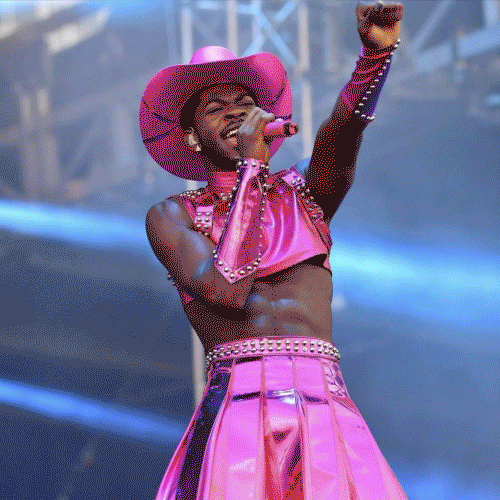Meow Mixtape: SOUTHERN GRRRLS
My childhood peach pastel boombox had a thing for girls. I loved MJ but liked Janet more and blasted Belinda Carlisle’s “Mad About You” in my My Little Pony pjs, later busting ass on bikes in a Marvin the Martian tee to the Go-Go’s and Joan Jett. Schooled by the Breeders, Babes in Toyland, L7, and a smorgasbord of PJ Harveys and Courtney Loves, my first weapon was a sea green Lotus with a pink glitter “Goddess” and Buttercup Powerpuff sticker. By 15, I joined a riot grrrl band, SheWitch, and my licensed-to-drive band buddies swooped me into the city, unleashing a world of Stickfigure distro, records and radical zines, Tortilla’s burritos, Fifi Mahony’s and Charis (one of the last feminist bookstores in the US). I came to terms with the fact that I had a thing for girls sexually, too, and was able to be more open about this thanks to lunchtime’s Fruitopia and cheese fries in the counselor’s office for our LGBT support group, never given an official name because ‘90s Cobb County school administration would have flipped. Before band practice and city adventures that meeting was my only refuge. Sometimes the only safe space you have is your friends.
Stella Zine of Pagan Holiday was one of the cool cats I met at the C-12 South warehouse one night. She was wearing a “safe sex slut” button and her spoken word on sex worker rights and queer visibility hit heavy with the teen me. Stella is featured and involved in the 2013 documentary Grrrl. If you YouTube “riot grrrl,” tons of docs pull up, the music often buried in favor of social studies. Undoubtedly my survival skills in the misogynistic homophobic cesspool of high school were armed by mixed tapes of Bikini Kill and Heavens to Betsy, my alienation most comforted by queercore (and emo-punk tinged) Team Dresch. The bubble I was in was intense. How I identified at an age where “human” felt alien, fuck off to gender all together, was made manageable by artwork and words in zines from faraway cities. My headphones were a shield. I’d rather lay in a pile of sweat on the backseat of my mom’s van with my Walkman than walk around a fair in North Georgia pelted with the stares of rednecks who couldn’t tell if I was a boy or a girl.
We focused on mental health, homemade haircuts, “girl luv is good luv” shirt screens, changed our names from Jayne to Jack, organized riot grrrl chapters, spraypainted “Men Working” signs, started HRT, snail-mailed pen pals in the age of AOL dial-up, bought full records to discover more than one song of a band we liked. Shows were opportunities to meet like-minded comrades. Kaia’s post–Team Dresch Butchies from Durham, NC, played an all-ages gig at The Point (now L5P Clothing Warehouse) and we were stoked. Riot grrrl and queercore kiln of the West Coast often skipped over ATL for more populated clusters of cities. When Sleater-Kinney played Echo Lounge, with the sassy and brand new debut of the Gossip, the joy I felt is unmatched even today. I fondly remember Bangs, Lungleg, Red Monkey and Lucid Nation at Georgia Tech’s Under the Couch and Erase Errata and Subtonix at the Squaresville house show spot (where one of my bandmates booked after the straight-edge jocks moved out).
Visibility of queers and wymyn in the punk scene (regardless of political agenda) influenced us embrace our own expression and exploration. This mix includes: pre–S-K/Portlandia Carrie Brownstein’s Excuse 17; Kathleen Hanna’s project the Fakes with Nation of Ulysses’ Tim Green and #1 crush Rachel Carns of the Need; S-K Corin Tucker’s Cadallaca; Bratmobile side project Cold Cold Hearts; pre–Bikini Kill the Frumpies. This mix also includes influential ladies of post-punk, including Athens, GA, based Pylon and Oh-Ok (queer gender-mixed bands ruled 1980s Athens, i.e., B-52s and Bar-B-Q Killers, well documented in the 1987 Athens, GA: Inside/Out film). The strings between twee-pop and pop punk of earlier times and the leanings towards no wave and noise punk after riot grrrl’s heyday were as important to the conversation as the moments we were experiencing in youth, building the foundation to queer culture for the decades to come.
Archive
- February 2025
- November 2024
- October 2024
- September 2024
- August 2024
- July 2024
- June 2024
- May 2024
- April 2024
- October 2023
- July 2023
- June 2023
- May 2023
- April 2023
- March 2023
- February 2023
- June 2022
- April 2022
- March 2022
- January 2022
- December 2021
- October 2021
- September 2021
- August 2021
- July 2021
- June 2021
- May 2021
- April 2021
- March 2021
- February 2021
- January 2021
- December 2020
- October 2020
- September 2020
- August 2020
- July 2020
- June 2020
- May 2020
- April 2020
- March 2020
- February 2020
- January 2020
- December 2019
- November 2019
- October 2019
- September 2019
- August 2019
- July 2019
- June 2019
- May 2019
- April 2019
- March 2019
- February 2019
- January 2019
- December 2018
- November 2018
- October 2018
- September 2018
- August 2018
- July 2018
- June 2018
- May 2018
- April 2018
- March 2018
- February 2018
- January 2018
- December 2017
- November 2017
- October 2017
- September 2017
- August 2017
- July 2017
- June 2017
- May 2017
- April 2017
- March 2017
- February 2017
- January 2017
- December 2015
- November 2015
- October 2015
- September 2015
- August 2015
- July 2015
- June 2015
- May 2015
- April 2015








